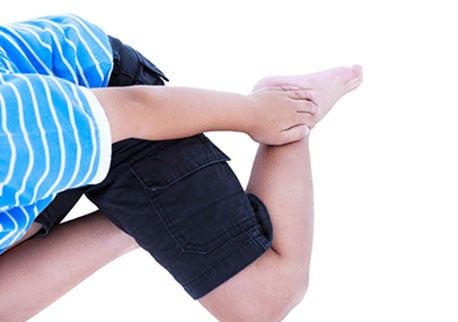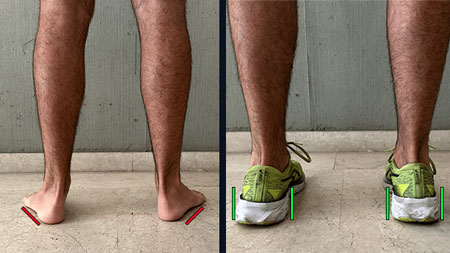How to Fit Heel Cups – The Most Effective Way to Fit Heel Cups Inside Your Kids’ Shoes!
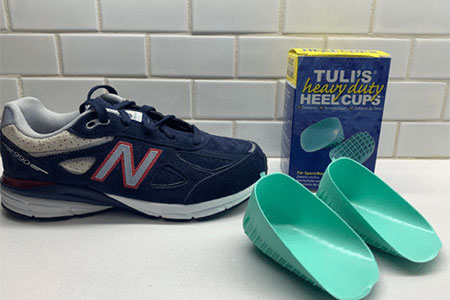
Heel cups can be a game-changer for children with heel pain, as long as they are fitted inside the correct pair of shoes. If the heel cups don’t fit correctly inside your kids’ shoes, your child won’t get the full support or stability that the heel cups have to offer. As a passionate shoe fitter with years of experience, I understand the importance of fitting children in the correct type of shoes, especially during their formative years. Follow my simple two step method to make sure that your kids’ heel cups are fitting correctly inside the shoes.
How to Fit Heel Cups – Follow These Two Simple Steps
By following my two-step method, you’ll not only enhance the fit but also provide the support your child needs.
First Step: Make Sure you Have the Correct Type of Shoes
Place the heel cup inside the shoe, ensuring it sits flat and snug against the heel area. Heel cups are not able to fit in any type of shoe, the shoes need to provide extra depth to allow the heel cups to fit deeply inside the shoes. If the heel cups don’t fit deeply inside the shoes, your child might get the impression that their feet are coming out of the shoes.

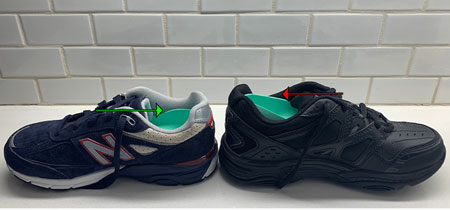
Second Step: Apply my Special Shoe Lacing Technique
Once you have the right shoes, the next step is to fit the heel cups and ensure they stay in place. This involves a special lacing technique to secure the heel cup and provide the best support.
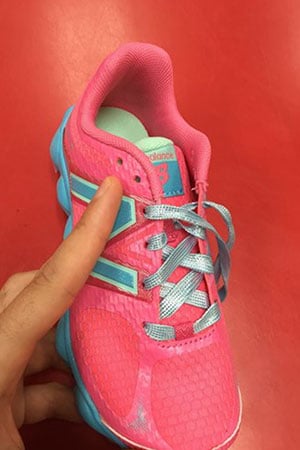
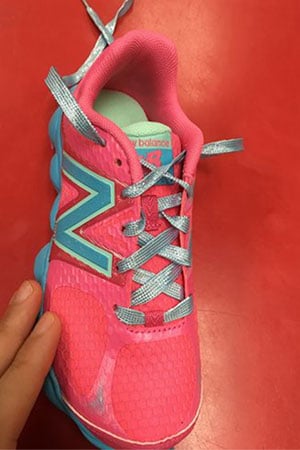
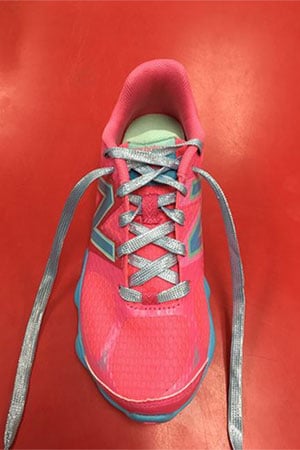
If you follow these two steps, your child will get the full benefits that the heel cups have to offer and you will notice how the pain will be greatly reduced or eliminated. It’s important to understand that the heel cups and the shoes work together in reducing or eliminating your child’s heel pain.
Supportive and Deep Shoes for Fitting Your Child’s Heel Cups
I’ve created a comprehensive list of recommended shoes that are ideal for fitting heel cups. These shoes offer the depth and support needed to maximize the benefits of heel cups. You can access this resource by contacting me directly or visiting my website.
I always recommend parents choose shoes with shoelaces instead of velcro. The main reason is that shoes with shoelaces offer better support and stability. They also help keep the child’s heels pushed back and securely in place at the back of the shoe.
Remove the Original Insoles Before Adding Heel Cups?
No, you don’t need to remove the original insoles of your kids’ shoes when placing the heel cups, just place the heel cup on top of the shoe insoles.
The Best Heel Cups for Kids
There are two specific heel cups that offer superior shock absorption and prevent foot fatigue by minimizing the impact that the feet take when they come in contact with the ground.
Tuli’s Heel Cups
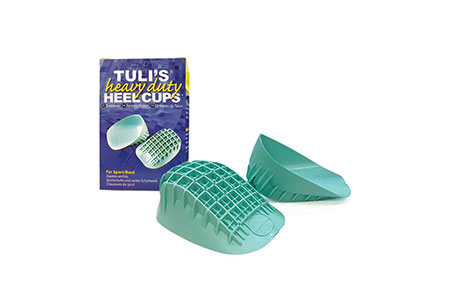
- Order Tuli’s Heel Cups on Amazon
- Ideal for treating and preventing general heel pain, plantar fasciitis, Sever’s disease, excessive pronation, Achilles tendonitis
- Small Size – Fits from a little kid shoe size 10.5 to a big kid shoe size 6. Best for children under 80 lbs.
- Regular Size – Fits big kid shoe size 6 and above. Weight up to 175 lbs.
KidSole Heel Cups
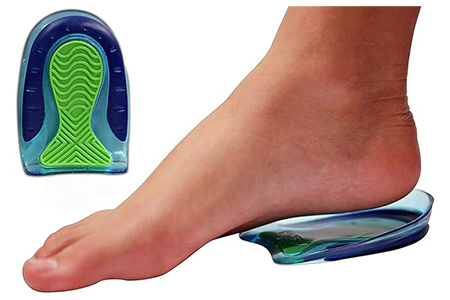
- Order KidSole heel cups on Amazon
- Available from a little kid shoe size 11 through big kid shoe size 7
- Sport grip design allows the heel pad to stay in place while kids run and play
- This product is specifically designed for active kids who need additional heel comfort and protection
- Fits from a little kid’s shoe size 10.5 to a big kid’s shoe size 6. Best for children under 80 lbs.
Contact Me with Any Questions
If you have any questions or need personalized advice on fitting heel cups or choosing the right footwear for your child, don’t hesitate to contact me. Never ignore your child’s heel pain, is not normal and there are various ways of reducing or fully eliminating the pain.
Watch My YouTube Video
For a visual guide on fitting heel cups inside kids’ sports shoes, you can watch my detailed YouTube video. It covers the entire process step-by-step and provides additional tips for ensuring the best fit.
Heel Cups for Sport Shoes – Reduce the Impact on Your Kids’ Feet!
When children get involved in a particular sport such as soccer, football, baseball, or basketball, they are stressing their feet and legs at a whole different level.
I have helped several children who were experiencing heel pain after their soccer games or even during soccer practice, by fitting them in the correct type of heel cups. If you have a child who is playing sports and experiencing heel pain, the heel cup I showed you will significantly reduce or fully eliminate your child’s heel pain.
Heel pain in children happens more often than you imagine, and this is mostly because they are wearing the wrong pair of shoes, but sometimes it’s due to having a foot condition such as flat feet, weak ankles, or low muscle tone.


